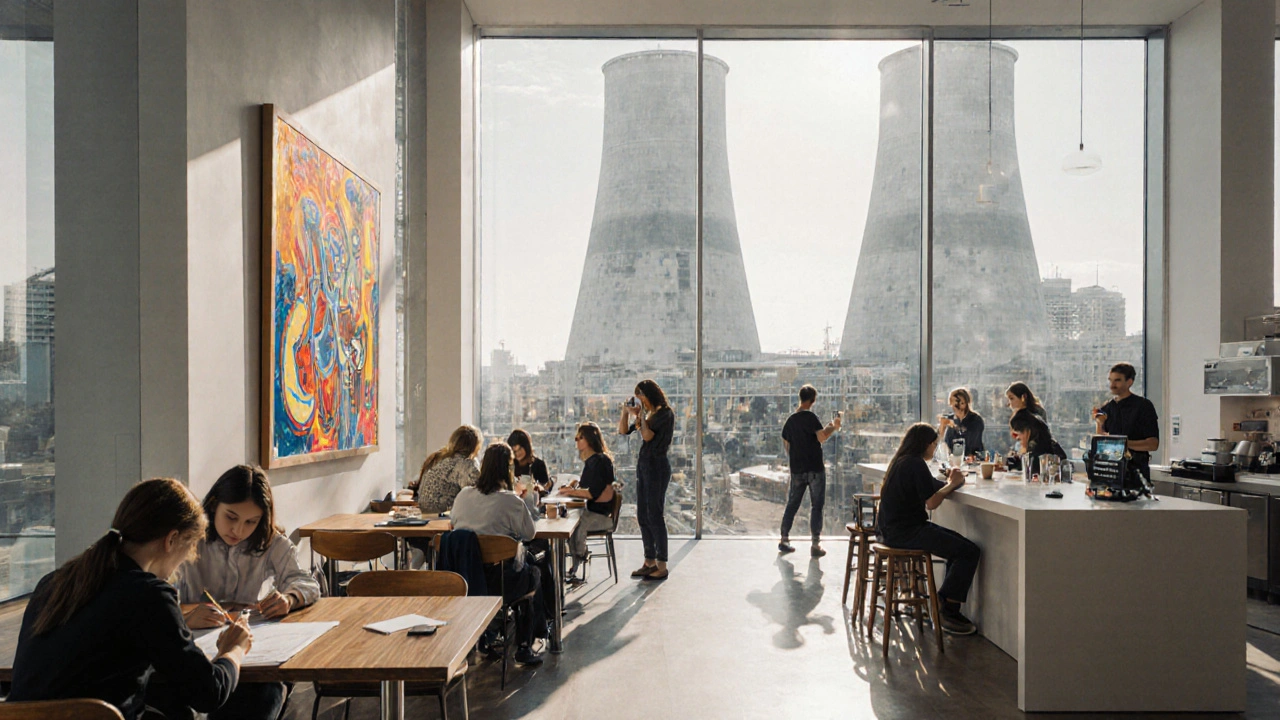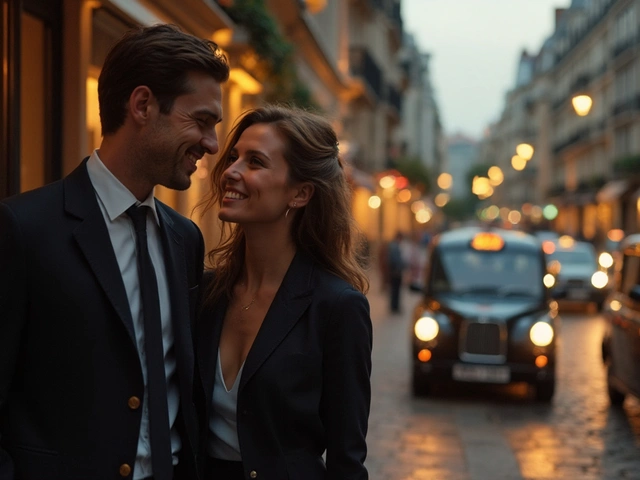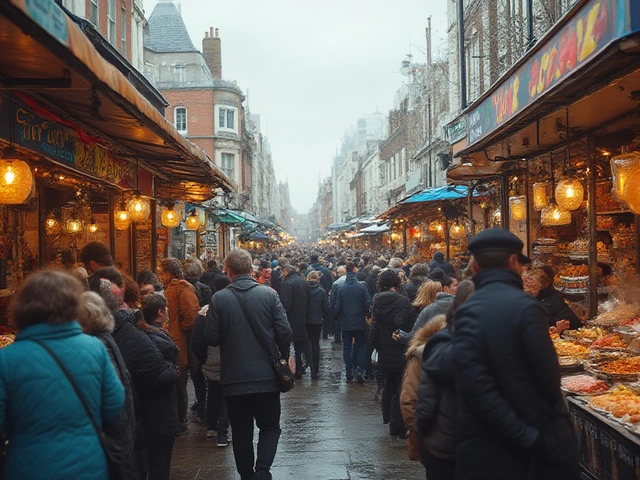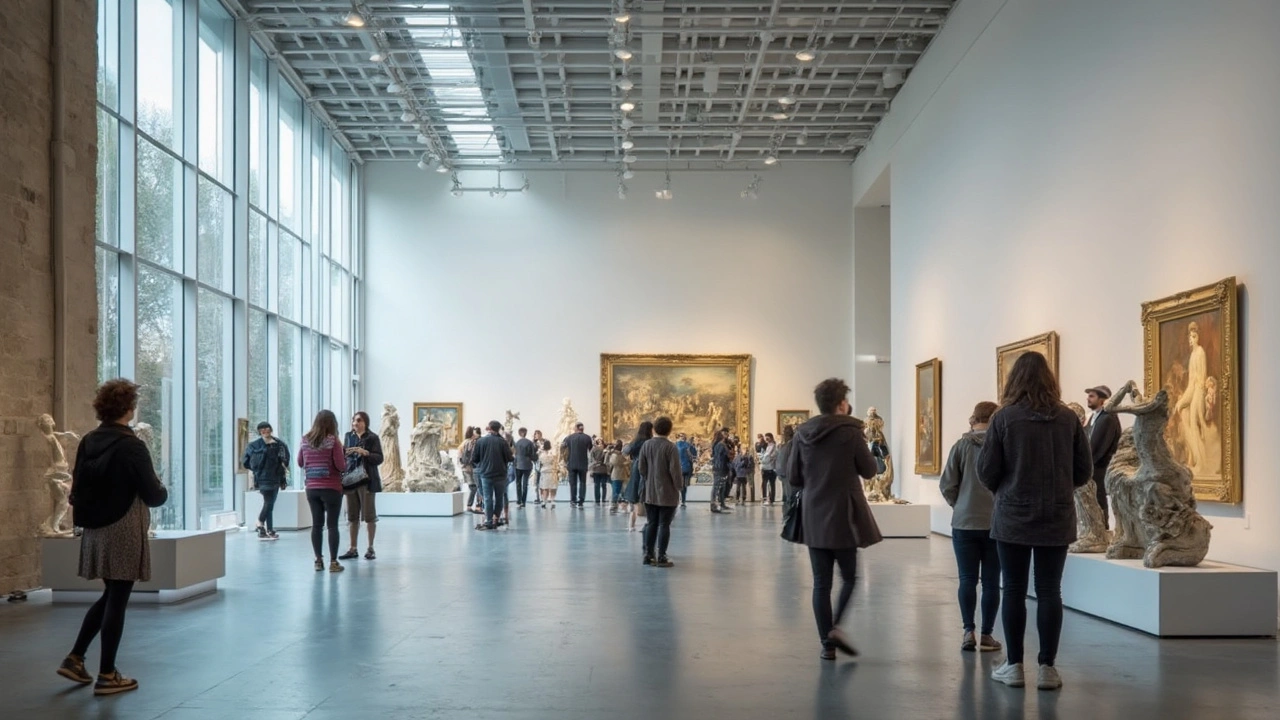
Ask any Londoner and they’ll tell you the art scene here is everywhere—street corners, centuries-old museums, under railway arches, or nestled above a busy café in Hackney. But lately, something strange has been happening: art in London is slipping off the whitewashed walls and finding new homes online. If you ever fancied swapping your National Gallery stroll for a click-and-scroll experience in fluffy slippers, you’re in good company. The landscape’s changing faster than a Banksy mural being pressure-washed by the council. Gone are the days when the only art you saw was with an oyster card, a polite nod at a guard, and the creak of those wooden gallery floors. London’s art market—the traditional, the quirky, and the digital—is rewriting the rulebook before your very eyes.
From Gilt Frames to Graffiti: London’s Traditional Galleries
Few cities wear their art on their sleeve like London does. The grand old dames—the London art galleries like the National Gallery, Tate Britain, and the Royal Academy—are as much pieces of history as the works they house. You get why the National Gallery, for example, still sits proudly in Trafalgar Square; its steps have seen everything from climate change protests to personal marriage proposals at sunset. Inside, you’ll catch Rembrandt glaring at you with 17th-century attitude while tourists pose awkwardly with sunflowers, Van Gogh’s, not the actual botanical ones. There’s this lovely, stubborn loyalty to oil on canvas, to sculptures utterly untouchable behind velvet ropes. Until recently, any modern twist was more about new curation than new technology—think temporary David Hockney retrospectives or a cheeky installation in the Tate Modern’s Turbine Hall that leaves you both confused and Instagramming.
But not every gallery in London is a marble-floored institution. Some are hidden in Shoreditch basements or under railway bridges in Peckham where graffiti sits next to the work of Royal College of Art graduates. Small, artist-run spaces like Whitechapel Gallery earned their reputations by not playing by the rules. These spots offer something visitors love—the uncanny feeling you’re discovering tomorrow’s superstar before they end up in Saatchi’s collection. And boy, does London know how to mix heritage with rebellion. Private galleries sprinkled in Mayfair might whisper of secret auctions and celebrity sightings, while the annual Frieze Art Fair in Regent’s Park turns London into a global hotspot for collectors, students, and anyone who fancies sipping prosecco while pondering a room-sized pile of bricks labeled “Untitled.”
Behind all this—money. Loads of it, from charities funding public spaces to wealthy collectors vying for the next Damien Hirst. The Economist’s 2024 report put London as the second largest art market hub globally, after New York, accounting for roughly 20% of the world’s art sales. No wonder new galleries pop up faster than you can say “Banksy.” Yet, even with all this tradition and trade, whispers of digital disruption have always lingered in the air, like that faint smell of turpentine you only notice after six hours at the RA’s Summer Exhibition.
Virtual Reality: How Tech Redefines London’s Art Experience
Tech isn’t just sneaking in—it’s holding the door open and offering you a free download. In the past couple of years, London has seen an explosion in virtual exhibitions and digital art spaces. The pandemic may have lit the fuse, but London’s tech-savvy artists, gallerists, and collectors have run with it. No need for a rainy dash to the Tube; now, you can join a Sotheby’s auction online, navigate a Tate Modern show in 360-degree VR, or chat with an artist live from the other side of the world, all while Luna the dog snoozes on your lap. One cool fact: The Serpentine Galleries moved huge swathes of their exhibitions online, complete with virtual tours narrated by curators and artists, often providing interactive elements you simply won’t get in person.
London isn’t just copying Silicon Valley. Take Vortic Art, the virtual gallery platform founded right here in the UK, which collaborates with mega-galleries like Gagosian and Victoria Miro. Their virtual rooms use hyper-detailed 3D scans, letting you view a Hockney at eye level at three in the morning if you like. Art lovers with mobility issues or strapped for time can finally explore spaces they couldn’t reach before. And tech is levelling the playing field—student artists from Goldsmiths now host immersive graduation shows that anyone in the world can visit. Virtual gatherings and events, like London Gallery Weekend’s online map, let locals and expats alike build their own custom art crawls from home.
Want some tips for virtual art in London? Use platforms with live Zoom Q&As (Whitechapel Gallery does these monthly), and don’t forget to toggle high-resolution mode if your internet can handle it—details matter when you’re staring at a Turner or Eva Rothschild from your sofa. If you’re missing the buzz of opening night, try joining a live-streamed exhibition tour or even a digital wine tasting run by the event hosts. A little slice of art-world magic, minus the awkward small talk about “postmodern dialogue.”
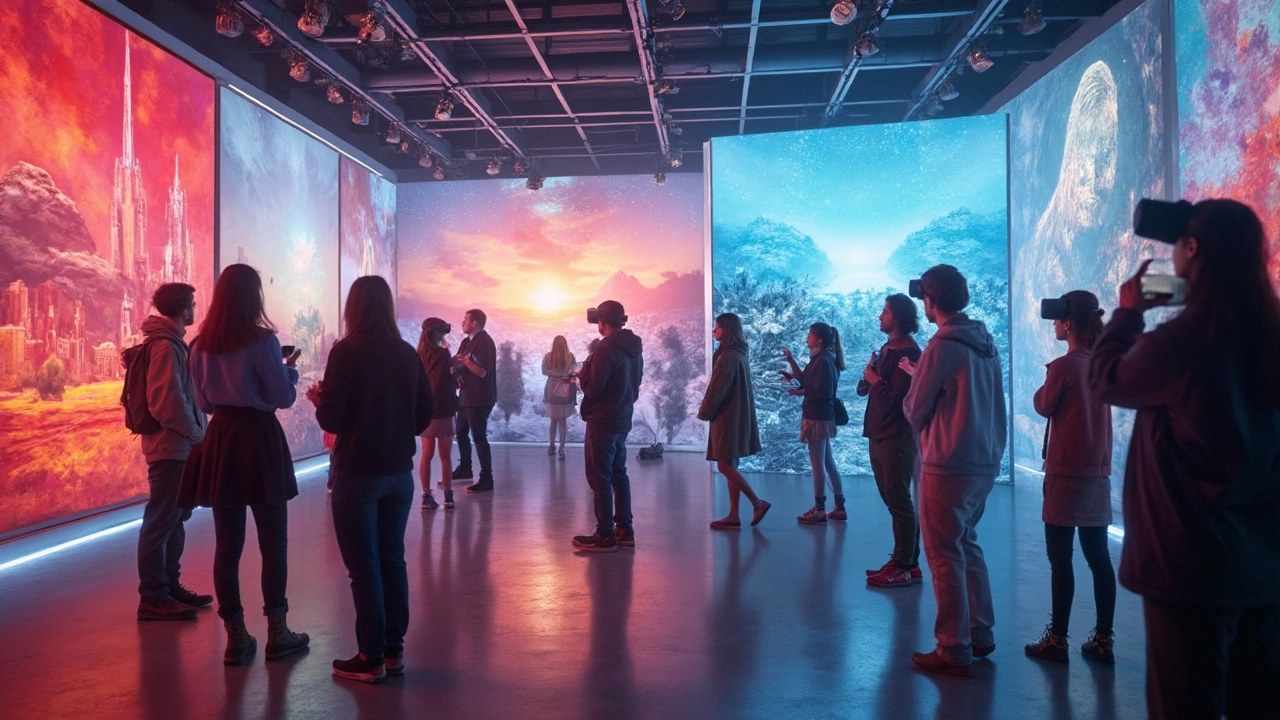
London’s Digital Art Boom: NFTs and Beyond
By now, even your gran has probably heard of NFTs, and London jumped on the bandwagon with both feet. In 2024, the London NFT Art Fair drew over 12,000 visitors, with digital creators and old-school collectors rubbing elbows (virtually and in-person). You could buy works minted on the blockchain right on the spot, sometimes priced in pounds, sometimes in crypto. The trend’s not about gimmicks. Turner Prize-nominated artists have dropped collections, with local galleries teaming up with digital platforms like Async Art and Foundation to offer limited edition, collectible pieces.
But digital doesn’t mean disconnected. London’s brick-and-mortar galleries are finding clever new ways to merge screen with street. The Lazinc gallery in Mayfair, for example, hosted hybrid NFT exhibits where digital work filled the walls and physical tokens were yours to take home. At the Other Art Fair in King’s Cross, visitors lined up to mint selfie-NFTs as souvenirs, while emerging artists explained their process over pints at the bar. It’s evolving so quickly that you’ll see everything from 8K projections onto industrial warehouses to tiny LED displays in Soho pop-ups.
Digital also means open doors. Local schools like Central Saint Martins now run public workshops for digital art creation—we’re talking AR, AI, generative art, and software tools you can try regardless of your experience. If you’re a Londoner wanting a taste, pop by a Byte Arts meet-up; you might find yourself experimenting with VR painting or even coding your first interactive sculpture. For families, London’s museums increasingly offer kid-friendly digital art zones (Tate Kids online, anyone?), ensuring the next Damien Hirst might be discovering Photoshop before proper handwriting.
Hybrid Events: Where Real and Virtual Worlds Meet in London
Face it, Londoners love a happening, but too many back-to-back events gives you FOMO fatigue. Hybrid art events hit that sweet spot: real-world excitement with digital convenience. In 2025, many major London galleries are healing the divide. The Southbank’s annual Art Night, for instance, broadcasts live performances you can interact with on your phone, while VR headsets at the venue let you see shows from new, surreal angles. In fact, a 2024 survey by Arts Council England found over 68% of Londoners would attend more gallery events if there was an option to join online as well as in person.
If you’re shy or want to skip the queue, these hybrid experiences are perfect. Lisson Gallery’s livestreams feature real-time artist interviews, giving you front row access minus the standing around in your workwear. Art fundraisers too—like those run by the London Art Fair—now include virtual bidding, meaning you don’t have to brave London’s drizzle or dress up just to take part. There’s a certain intimacy when you can message a curator during a Q&A, take a screenshot souvenir, or revisit sections you missed while boiling the kettle.
Here’s a tip: keep an eye out for London events that give away goodie bags to both in-person and digital guests (it’s a thing, and who doesn’t love free stuff?). And if you’re a creative type, many of these hybrid spaces hold open calls for digital group shows, so your work could be seen by crowds who'd never find it otherwise. These events are bridging gaps, creating a new sense of community from Hampstead to Greenwich—and, let’s face it, making it easier to fit art into a schedule already stuffed with life’s other bits.

The Numbers Game: How Big Is London’s Virtual Art Scene?
If it all sounds hype-y, the numbers back it up. London leads mainland Europe for digital art events, with nearly 900 virtual exhibitions held in Greater London alone last year—that’s double the rate of Paris or Berlin. Online attendance in early 2025 hit an average of 6,000 per major show, according to the British Art Market Federation, and digital sales now account for 27% of gallery turnover. Physical spaces aren’t fading, either. In fact, the new influx of virtual visitors often translates into better in-person turnout, as more people discover exhibitions they’d have missed otherwise.
Different generations are getting hooked. Data from the Tate shows audiences aged 16–30 are now split nearly equally between digital and physical visits, while over-50s are adopting virtual tours at a surprising rate (probably thanks to all those lockdown months spent streaming everything else). London’s art economy is thriving, boosted by grants from groups like Arts Council England that make sure cutting-edge tech is part of tomorrow’s standard gallery kit. It’s normal to see major museums invest in AI-powered interpretation apps, high-resolution streaming, and accessible VR headsets, all aimed at drawing in wider audiences.
| Year | London Virtual Exhibitions | Online Attendance | Digital Sales Share |
|---|---|---|---|
| 2022 | 610 | 3,100 | 13% |
| 2023 | 750 | 4,800 | 19% |
| 2024 | 892 | 6,000 | 27% |
If you’re new to the London art crowd, start with the big hitters’ online offerings—the National Portrait Gallery, for instance, just relaunched their site with AI guides that build you custom tours based on what you click. Explore Instagram tags like #LondonArtScene or apps like ArtRabbit to get real-time info about digital and hybrid events. If you love meeting people, join a virtual private view (VPV), where the comment section is your networking goldmine—beats shouting over a canapé tray any day. And for those with kids, don’t miss the ‘make it at home’ workshops, which exploded in popularity post-lockdown and now run weekly from local favorites including Dulwich Picture Gallery.
London art is evolving. Whether you’re a lifelong collector, a Saturday gallery hopper, or just someone who likes having beautiful things pop up between emails, the city’s new mix of traditional and virtual spaces means there’s honestly a bit of magic out there for everyone. Even Luna approves—she’s partial to virtual walk-throughs with ambient music, especially on rainy afternoons.

